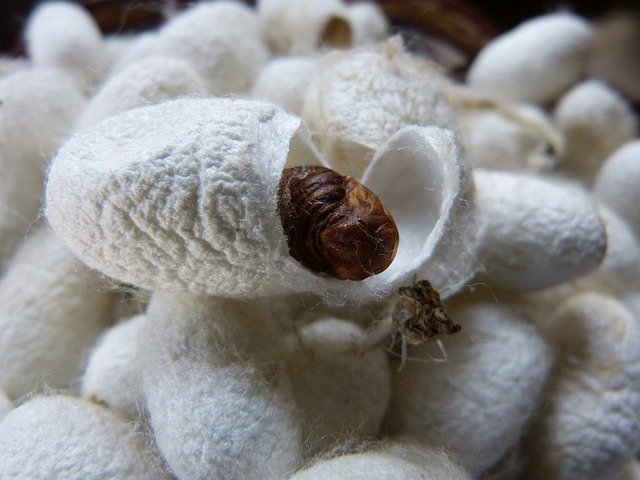
Hello friends Lakshmi community...!!
Silkworm Cocoons: Natural Wonders in the Silk Production Process
Silkworm cocoons, or in scientific terms Bombyx mori, are one of the natural wonders that have an important role in the textile industry. Silkworms, which are produced from silk moth eggs, undergo an interesting process of metamorphosis, and cocoons are one of the key stages in their life cycle.
Metamorphosis Process
Silkworms start their life from eggs which hatch into larvae. After changing their skin several times, these larvae grow into caterpillars that are ready to form cocoons. This process usually takes 4 to 6 weeks. In this phase, silkworms consume mulberry leaves intensively to get sufficient nutrition before entering the pupal stage.
Cocoon Formation
After reaching its maximum size, the silkworm begins to form a cocoon by secreting silk fibers from glands in its mouth. This fiber consists of naturally produced fibroin protein, and within a few days, the caterpillar will wrap itself in this fiber to form a dense cocoon. The resulting cocoons have an oval shape and are white, yellow, or brown, depending on the type of silkworm. Each cocoon can produce up to 1,000 meters of fine silk fiber.
Benefits of Silkworm Cocoons
Silkworm cocoons have various benefits, both economically and ecologically:
- Textile Industry: Silk fiber produced from cocoons is the main raw material for making silk fabric which is famous for its softness and high quality. Silk products are in great demand in domestic and international markets.
- Education and Research: Cocoons are also the subject of research in the fields of biology and materials technology, helping scientists understand more deeply about metabolic processes and genetic engineering.
- Organic Fertilizer: After the silk harvesting process, the remaining cocoons can be used as nutrient-rich organic fertilizer, supporting sustainable agriculture.
Challenges in Cultivation
Although cultivating silkworms and their cocoons promises to be profitable, several challenges need to be considered. Diseases that attack silkworms, climate changes and fluctuations in the silk market can affect production results. Therefore, farmers must continue to adapt and implement good cultivation practices.
Conclusion
Silkworm cocoons are a symbol of natural beauty and wonder that have high economic value. The unique cocoon formation process and its benefits in various aspects make silkworms an important component in a sustainable industry. Through good understanding and management, silkworm cultivation can continue to develop and provide benefits to society.
Thank you for stopping
Thank you, friend!


I'm @steem.history, who is steem witness.
Thank you for witnessvoting for me.
please click it!
(Go to https://steemit.com/~witnesses and type fbslo at the bottom of the page)
The weight is reduced because of the lack of Voting Power. If you vote for me as a witness, you can get my little vote.
Downvoting a post can decrease pending rewards and make it less visible. Common reasons:
Submit
Downvoting a post can decrease pending rewards and make it less visible. Common reasons:
Submit
Upvoted. Thank You for sending some of your rewards to @null. It will make Steem stronger.
Downvoting a post can decrease pending rewards and make it less visible. Common reasons:
Submit